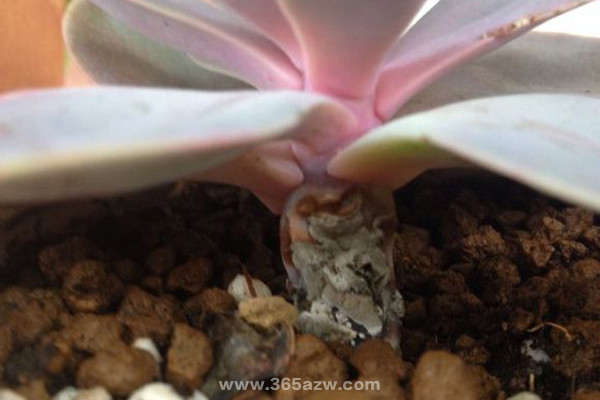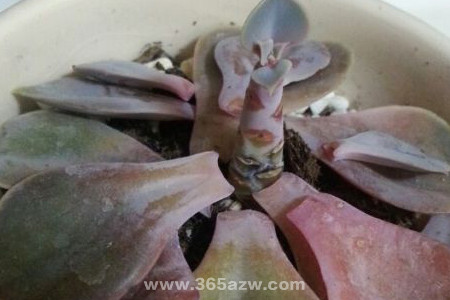What about the black rot of purple pearls?
Black rot takes many forms, but by the time you find that the purple pearl has blackened, it is too late to pay attention to the faded areas on the edge of the plant, as well as whether there are soft, mushy stems and leaves.

The reason for the black rot of purple pearl
Improper watering
Black rot is the most common disease in succulent plants, which is usually caused by fungal infection caused by too much watering or too moist surroundings.
The soil is impervious.
Another reason is that the soil is impervious and each watering causes water to accumulate on the stem or even the root.
Diseases and insect pests
Black rot caused by diseases and insect pests. Some pests are parasitic on leaves and stems, and wounds caused by sucking plant juices can also cause fungal infections.

Treatment of black rot of purple pearl
According to the reason, the black rot is dealt with.
Stem rot:
Remove the rotten parts as soon as possible, and re-branch the rest. Remember that the incision should be completely dry before it can be buried. If the rot is more serious, just throw it away!
Fungal rot:
Fungal infections must be handled carefully. Use a sterilized knife to cut off the rotten parts and cover them with a thin layer of sulfur. The plants were sprayed with a mixture of benzoate (a fungicide) and mancozeb.
Note: keep the tools clean and sterile when dealing with black rotten plants and wash your hands carefully before touching other plants.
Related
- Wuhan Hospital Iron Tree Blooming Result Was Instantly Frightened by the Gardener Master
- Which variety of camellia is the most fragrant and best? Which one do you like best?
- What is the small blue coat, the breeding methods and matters needing attention of the succulent plant
- Dormancy time and maintenance management of succulent plants during dormancy
- Minas succulent how to raise, Minas succulent plant pictures
- What are the varieties of winter succulent plants
- How to raise succulent plants in twelve rolls? let's take a look at some experience of breeding twelve rolls.
- Attention should be paid to water control for succulent plants during dormant period (winter and summer)
- Watering experience of twelve rolls of succulent plants
- Techniques for fertilizing succulent plants. An article will let you know how to fertilize succulent plants.



